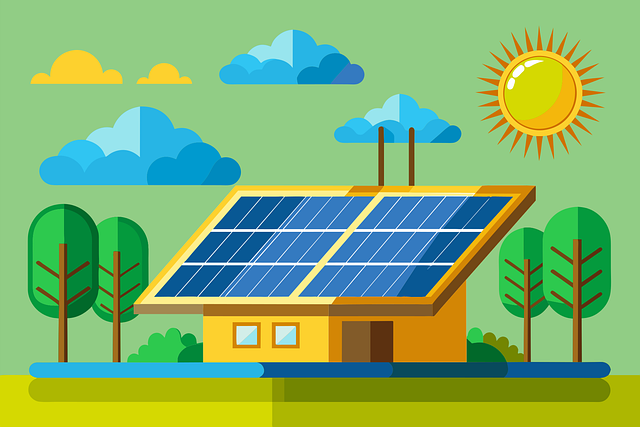“Maximize Energy Savings: Solar Performance Monitoring for Optimal Efficiency.”
Solar performance monitoring plays a crucial role in enhancing energy efficiency by providing real-time data on the operational status and output of solar energy systems. By continuously tracking key performance indicators such as energy production, system efficiency, and environmental conditions, monitoring systems enable users to identify inefficiencies, detect faults, and optimize energy generation. This proactive approach not only maximizes the return on investment for solar installations but also contributes to better energy management practices. As a result, solar performance monitoring empowers homeowners, businesses, and utilities to make informed decisions, reduce energy waste, and ultimately promote a more sustainable energy future.
Enhanced System Performance Tracking
In the realm of renewable energy, solar performance monitoring has emerged as a pivotal component in enhancing energy efficiency. By employing advanced tracking systems, solar energy users can gain invaluable insights into the operational effectiveness of their solar installations. This enhanced system performance tracking not only maximizes energy output but also ensures that the systems operate at peak efficiency over their lifespan.
To begin with, the integration of sophisticated monitoring technologies allows for real-time data collection and analysis. These systems continuously assess various performance metrics, such as energy production, system temperature, and environmental conditions. By doing so, they provide a comprehensive overview of how well a solar installation is functioning at any given moment. This immediate feedback is crucial, as it enables users to identify any discrepancies between expected and actual performance. For instance, if a solar panel is underperforming, the monitoring system can alert the owner to potential issues, such as shading from nearby trees or dirt accumulation on the panels. Consequently, timely interventions can be made to rectify these problems, thereby optimizing energy production.
Moreover, the ability to track performance over time allows for a deeper understanding of the system’s efficiency trends. By analyzing historical data, users can identify patterns and correlations that may not be immediately apparent. For example, seasonal variations in energy production can be assessed, helping users to anticipate and plan for fluctuations in energy generation. This long-term perspective is invaluable for both residential and commercial solar users, as it aids in making informed decisions regarding energy consumption and potential system upgrades.
In addition to improving operational efficiency, solar performance monitoring also plays a significant role in maintenance planning. Regular monitoring can help predict when maintenance is required, thus preventing costly repairs and downtime. By establishing a proactive maintenance schedule based on performance data, users can ensure that their systems remain in optimal condition. This not only extends the lifespan of the solar panels but also enhances their overall energy efficiency. Furthermore, predictive maintenance can lead to significant cost savings, as it reduces the likelihood of unexpected failures that could disrupt energy production.
Transitioning from individual systems to a broader perspective, the implications of enhanced system performance tracking extend beyond individual installations. As more users adopt solar technology, the aggregated data from performance monitoring can contribute to a larger understanding of solar energy trends. This collective data can inform policy decisions, guide research and development efforts, and ultimately drive advancements in solar technology. By sharing insights gained from performance monitoring, the solar industry can work towards improving the efficiency of solar systems on a global scale.
In conclusion, enhanced system performance tracking through solar performance monitoring is a game-changer in the quest for energy efficiency. By providing real-time insights, enabling long-term trend analysis, and facilitating proactive maintenance, these monitoring systems empower users to maximize their solar energy output. As the world increasingly turns to renewable energy sources, the importance of such technologies cannot be overstated. They not only enhance individual system performance but also contribute to the broader goal of sustainable energy practices. Ultimately, the integration of advanced monitoring solutions is essential for realizing the full potential of solar energy, ensuring that it remains a viable and efficient alternative to traditional energy sources.
Real-Time Data Analysis

In the realm of renewable energy, solar performance monitoring has emerged as a pivotal tool for enhancing energy efficiency. At the heart of this process lies real-time data analysis, which plays a crucial role in optimizing solar energy systems. By continuously collecting and analyzing data from solar panels, inverters, and other components, stakeholders can gain invaluable insights into the performance and efficiency of their solar installations. This immediate access to information allows for timely interventions and informed decision-making, ultimately leading to improved energy output and reduced operational costs.
One of the primary advantages of real-time data analysis is its ability to identify performance issues as they occur. For instance, if a solar panel is underperforming due to shading, dirt accumulation, or equipment malfunction, real-time monitoring can quickly alert system operators to the problem. This prompt detection is essential because even minor inefficiencies can significantly impact overall energy production. By addressing these issues swiftly, operators can ensure that their solar systems operate at peak efficiency, maximizing energy generation and minimizing losses.
Moreover, real-time data analysis facilitates a deeper understanding of how environmental factors influence solar performance. Variables such as temperature, humidity, and sunlight intensity can all affect the efficiency of solar panels. By continuously monitoring these conditions alongside energy output, operators can establish correlations that inform future operational strategies. For example, if data reveals that energy production drops significantly during certain weather conditions, operators can adjust their maintenance schedules or implement additional cleaning protocols to mitigate these effects. This proactive approach not only enhances energy efficiency but also extends the lifespan of the solar equipment.
In addition to identifying issues and understanding environmental impacts, real-time data analysis also supports predictive maintenance. By analyzing historical performance data, operators can identify patterns and trends that indicate when maintenance is likely to be needed. This predictive capability allows for scheduled maintenance to be performed at optimal times, reducing downtime and ensuring that the system remains operational. Consequently, this leads to a more reliable energy supply and enhances the overall return on investment for solar energy systems.
Furthermore, real-time data analysis empowers users to make informed decisions regarding energy consumption. With access to detailed performance metrics, homeowners and businesses can adjust their energy usage patterns to align with peak solar production times. For instance, by shifting energy-intensive activities to daylight hours when solar output is highest, users can maximize their reliance on renewable energy and minimize their dependence on grid electricity. This not only reduces energy costs but also contributes to a more sustainable energy ecosystem.
As the technology behind solar performance monitoring continues to evolve, the capabilities of real-time data analysis are expanding. Advanced analytics, machine learning, and artificial intelligence are increasingly being integrated into monitoring systems, enabling even more sophisticated insights and automation. These innovations promise to further enhance energy efficiency by optimizing system performance in ways that were previously unattainable.
In conclusion, real-time data analysis is a cornerstone of effective solar performance monitoring, driving improvements in energy efficiency across the board. By enabling prompt issue detection, fostering a deeper understanding of environmental impacts, supporting predictive maintenance, and empowering informed energy consumption decisions, real-time data analysis transforms how solar energy systems are managed. As the demand for renewable energy continues to grow, harnessing the power of real-time data will be essential for maximizing the benefits of solar technology and achieving a sustainable energy future.
Predictive Maintenance Benefits
In the realm of renewable energy, solar performance monitoring has emerged as a pivotal tool for enhancing energy efficiency, particularly through the implementation of predictive maintenance strategies. By leveraging advanced technologies and data analytics, solar performance monitoring systems can provide real-time insights into the operational status of solar panels and associated equipment. This proactive approach not only maximizes energy output but also significantly reduces the likelihood of unexpected failures, thereby ensuring a more reliable energy supply.
One of the primary benefits of predictive maintenance is its ability to identify potential issues before they escalate into major problems. Traditional maintenance practices often rely on scheduled inspections or reactive measures, which can lead to prolonged downtimes and lost energy production. In contrast, predictive maintenance utilizes data collected from various sensors and monitoring devices to analyze performance trends and detect anomalies. For instance, if a solar panel begins to underperform due to dirt accumulation or shading from nearby vegetation, the monitoring system can alert operators to take corrective action before the issue affects overall energy generation. This timely intervention not only preserves the efficiency of the solar array but also extends the lifespan of the equipment.
Moreover, predictive maintenance contributes to cost savings by optimizing maintenance schedules and reducing unnecessary service calls. By focusing on actual performance data rather than arbitrary timelines, operators can allocate resources more effectively. This means that maintenance activities can be performed only when needed, minimizing labor costs and maximizing the return on investment. Additionally, by preventing major failures, predictive maintenance helps avoid the high costs associated with emergency repairs and system replacements, further enhancing the financial viability of solar energy projects.
In addition to cost efficiency, predictive maintenance enhances the overall reliability of solar energy systems. With the increasing integration of solar power into the energy grid, maintaining a consistent and dependable energy supply is crucial. Predictive maintenance ensures that solar installations operate at peak performance, thereby contributing to grid stability. When solar panels are functioning optimally, they can provide a steady flow of energy, reducing reliance on fossil fuels and supporting the transition to a more sustainable energy landscape.
Furthermore, the data generated through solar performance monitoring can also inform long-term strategic planning. By analyzing historical performance data, operators can identify patterns and trends that may influence future energy production. This information can be invaluable for forecasting energy needs, optimizing system design, and making informed decisions about expansions or upgrades. As a result, organizations can better align their solar investments with their energy goals, ensuring that they remain competitive in an increasingly dynamic energy market.
In conclusion, the benefits of predictive maintenance in solar performance monitoring are multifaceted, encompassing cost savings, enhanced reliability, and strategic insights. By adopting a proactive approach to maintenance, solar operators can not only improve energy efficiency but also contribute to a more sustainable energy future. As technology continues to advance, the integration of predictive maintenance into solar energy systems will likely become even more sophisticated, further solidifying its role as a cornerstone of effective energy management. Ultimately, the ability to anticipate and address potential issues before they arise will empower organizations to harness the full potential of solar energy, driving both economic and environmental benefits in the process.
Optimizing Energy Consumption Patterns
In the quest for sustainable energy solutions, solar performance monitoring has emerged as a pivotal tool in optimizing energy consumption patterns. By harnessing advanced technologies and data analytics, solar performance monitoring systems provide real-time insights into the efficiency and productivity of solar energy systems. This capability not only enhances the performance of solar installations but also plays a crucial role in managing energy consumption more effectively.
To begin with, understanding how solar panels operate is essential. Solar panels convert sunlight into electricity, but their efficiency can fluctuate based on various factors, including weather conditions, shading, and system maintenance. By implementing solar performance monitoring, users can track these variables in real time, allowing for immediate adjustments to maximize energy output. For instance, if a monitoring system detects a drop in energy production due to shading from nearby trees, property owners can take proactive measures, such as trimming branches or repositioning panels, to restore optimal performance. This responsiveness is vital in ensuring that solar systems operate at their peak efficiency, ultimately leading to better energy consumption patterns.
Moreover, solar performance monitoring systems often come equipped with analytics tools that provide insights into energy usage trends. By analyzing historical data, users can identify peak consumption times and adjust their energy usage accordingly. For example, if a household typically consumes more energy in the evening, they can schedule high-energy tasks, such as running the dishwasher or charging electric vehicles, during the day when solar energy production is at its highest. This strategic alignment of energy consumption with solar generation not only reduces reliance on grid electricity but also maximizes the use of renewable energy, thereby enhancing overall energy efficiency.
In addition to individual households, businesses can also benefit significantly from solar performance monitoring. Commercial entities often have more complex energy needs and consumption patterns. By utilizing monitoring systems, businesses can gain a comprehensive understanding of their energy usage and identify opportunities for improvement. For instance, a retail store might discover that its energy consumption spikes during certain hours. With this knowledge, the store can implement energy-saving measures, such as adjusting lighting or HVAC systems during off-peak hours, thereby reducing costs and improving energy efficiency.
Furthermore, the integration of solar performance monitoring with smart home technologies can lead to even greater optimization of energy consumption patterns. Smart devices can communicate with solar monitoring systems to automate energy usage based on real-time solar production data. For example, a smart thermostat can adjust heating or cooling settings when solar energy production is high, ensuring that the home remains comfortable while minimizing energy costs. This level of automation not only simplifies energy management for homeowners but also contributes to a more sustainable energy ecosystem.
In conclusion, solar performance monitoring is a transformative approach to optimizing energy consumption patterns. By providing real-time data and insights, these systems empower users to make informed decisions about their energy usage. Whether for residential or commercial applications, the ability to align energy consumption with solar production leads to enhanced efficiency and sustainability. As the world continues to shift towards renewable energy sources, the role of solar performance monitoring will undoubtedly become increasingly vital in achieving energy efficiency goals and fostering a more sustainable future.
Q&A
1. **Question:** How does solar performance monitoring help identify energy losses?
**Answer:** Solar performance monitoring tracks the energy output of solar panels in real-time, allowing for the identification of discrepancies between expected and actual performance, which can indicate issues such as shading, dirt accumulation, or equipment malfunctions.
2. **Question:** In what ways can performance data optimize maintenance schedules?
**Answer:** By analyzing performance data, operators can schedule maintenance proactively based on actual performance trends, ensuring that any potential issues are addressed before they lead to significant energy losses.
3. **Question:** How does monitoring contribute to better energy management practices?
**Answer:** Continuous monitoring provides insights into energy production patterns, enabling users to adjust their energy consumption habits and optimize usage during peak production times, thus enhancing overall energy efficiency.
4. **Question:** What role does performance monitoring play in system upgrades?
**Answer:** Performance monitoring data can highlight underperforming components, guiding decisions on upgrades or replacements that can enhance the overall efficiency and output of the solar energy system.
Conclusion
Solar performance monitoring enhances energy efficiency by providing real-time data on system performance, enabling timely maintenance and optimization. By identifying underperforming components and tracking energy production against expected outputs, users can make informed decisions to improve system efficiency. This proactive approach reduces energy waste, maximizes output, and ultimately leads to lower energy costs and a more sustainable energy system.




